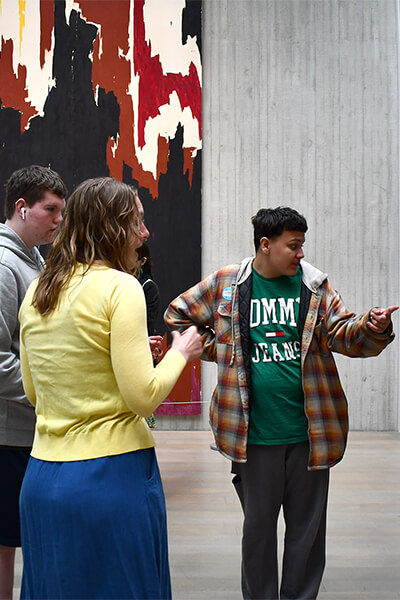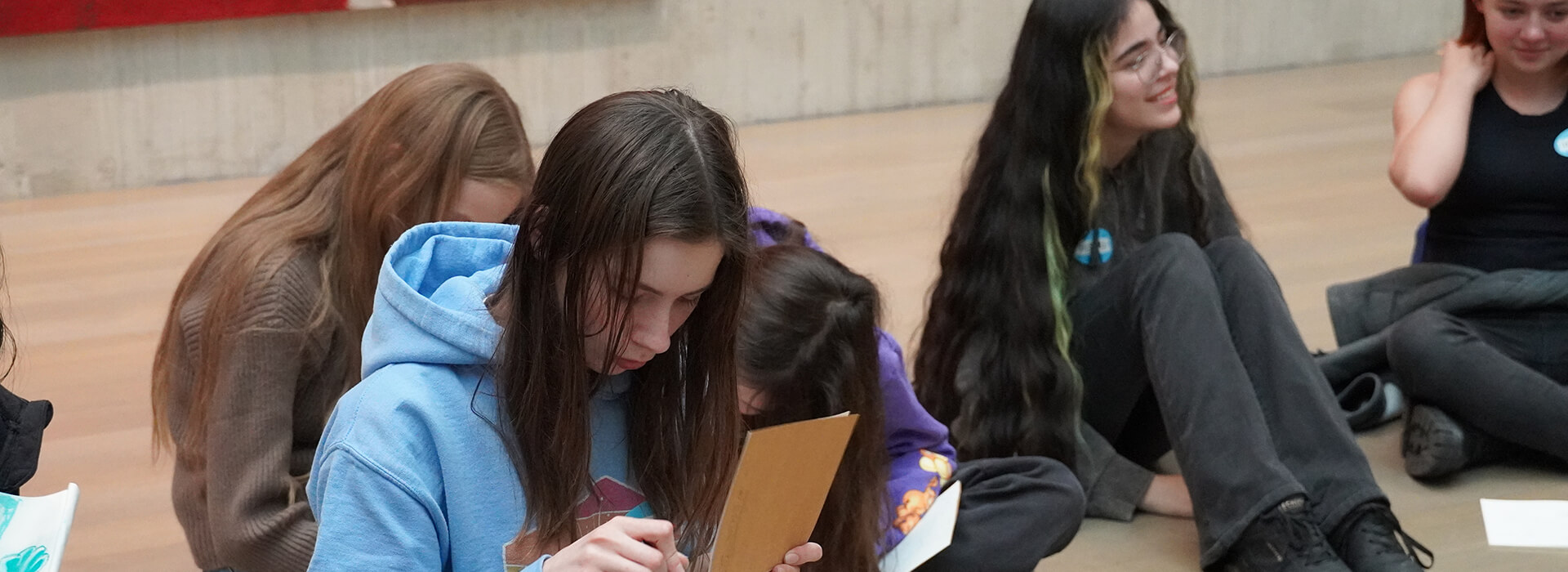Our 6-12 lesson seeks to empower students to express and communicate their thinking through art analysis and creative exploration. Middle and high school students will investigate Still’s representational and abstract art, considering the differences between the two and why an artist might choose to create abstract work while sharing their interpretations and ideas. Students will explore and play with developmentally appropriate materials to express their own creativity. Every student will receive a sketchbook to use and take home.
What will we do?
Pre-Visit Experiences
Virtual Logistics Meeting
Meet with a CSM educator who will walk you through the visit, ask questions about your students’ unique needs, and adjust the lesson plan to ensure that all students can access the experience.
Interactive introductory video:
Prepare for your visit as a class by learning more about the educators and the Museum. Follow along with this video to discover more about Clyfford Still, look closely at his artwork, and start expressing yourself.
Field Trip Experience (1 hr 45 min)
Welcome and Community Building
Meet Museum educators and be welcomed into the Museum. Build community with educators and each other.
Interactive Workshops:
Choose three interactive workshops to support students in looking, thinking, and creating. Workshops include:
- Looking Closely
- Exploring Abstraction
- Responding Creatively
- Investigating Identity
- Connecting to Context
- Playing with Materials
Reflective Debrief
Share about your favorite part of the experience and something you learned about yourself.
Post-Visit Reflection
Student Conversation
Discuss your experience with students to assess their feelings of belonging in the Museum, comfort with Museum educators, and opinions about art and art-making.
Teacher Survey
Reflect on your experience and provide feedback to help us continue to improve the program.
Workshop Descriptions:
Looking Closely
Utilize visual thinking strategies to look closely, listen to others’ perspectives, and develop your own interpretation of the work of Clyfford Still.
Exploring Abstraction
Dive into the world of abstraction through close looking, investigating the emotional impact of color, and playing with materials to express yourself.
Responding Creatively
Develop an interpretation of an artwork by Clyfford Still through close looking and making connections before playing and creating a response using a variety of media.
Investigating Identity
Explore facets of your own identity and how you relate to others by looking closely, considering others’ points of view, and using visual language to communicate who you are.
Connecting to Context
Investigate how context impacts artists by looking closely at the art of Clyfford Still, discussing historical and current events, and using that context to dive deeper and extend discussions.


